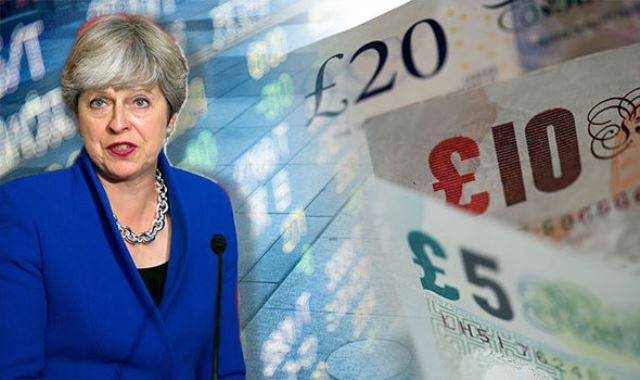The British pound fell on Tuesday after a survey showed firms in the dominant services sector reporting job cuts for the first time in six years, while uncertainty over the progress of Brexit negotiations also weighed on the currency.
Sterling hit the day’s low at $1.3014 after the Purchasing Managers’ Index (PMI) report was released, falling 0.2 percent to its lowest level since Jan. 24. It had been higher before the data, at $1.3051 against a broadly firm dollar.
“The PMI report is quite disappointing and points to a softening labour market, and that adds to the general uncertainty hanging over the currency in the short term,” said Credit Agricole currency strategist Manuel Oliveri.
A closely watched gauge of the world’s fifth-biggest economy, the IHS Markit/CIPS UK Services PMI fell to 50.1 in January from 51.2 in December — its lowest level since July 2016 and barely above the 50 mark that separates growth from contraction.
The pound’s latest decline took it well below a key market level of the 200-day moving average against the dollar. Analysts say a close below that level would open the door to further losses for the currency.
The weak data comes before a Bank of England meeting on Thursday, but little clarity is expected on the interest rate path. Interest rates last went up in August 2018, and the next move will probably hinge on how Brexit plays out.
“The services PMI is close to contracting and that is of particular concern to the UK economy,” said Neil Jones, head of hedge fund FX sales at Mizuho.
There is still time to find a solution to the impasse on Britain’s withdrawal from the European Union, German Chancellor Angela Merkel said in Japan on Tuesday.
Prime Minister Theresa May’s Brexit deal was rejected by parliament last month and she is trying to persuade the EU to accept changes to the agreement before the March 29 departure date.
The pound also turned negative on the day against the euro, sinking to a day’s low of 87.74 pence.
Broader derivative markets painted a cautious outlook for the pound with shorter-dated risk reversals, a ratio of calls to puts on the pound, settling near six-week lows.














